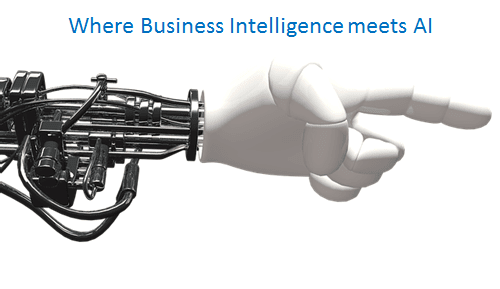
Variations are key to more knowledge
Variations are the key to the understanding of the feasibility of knowledge technology in any field. If the domain of discourse contains no variations, knowledge technology is superfluous and does not make any sense. In addition, I wish to establish what type of abstract models can feed a knowledge-based system in order to generate a (partial) user interface model of an executive information system and how this can be accomplished.
65 variations found
In the first part, I have described almost 65 variations (e.g. the size of the organization, the type of dimension, the polarity of a measure, and so on) that may influence the user interface of an executive information system. This facilitates the first step i.e. the employment of knowledge technology in the interface of executive information systems. I argue that if no variations exist at the input side, no reasoning process is required and hence the same interface will be generated for every user of the executive information system.
Selection of most feasibly variations
The second step details the importance of the variations and indicates which can most feasibly be included in a knowledge-based system. Finally, I have mapped the variations to knowledge intensive processes since a single variation will rarely lead to a legitimate conclusion. In other words: many variations should be taken into account to be able to conclude that a particular interface element will be appropriate!
Findings suggest that rule based systems would help to enhance user interaction
My findings suggest that knowledge technology, especially rule based systems, can play a role in the design of the interface of business intelligence solutions. However, I found that existing approaches (Puerta, 1997), which are able to automatically generate the user interface for user-task-oriented operational information systems, are difficult to use in executive information systems due to the ill-structured and non-routine nature of the senior manager’s job.
Not at design time
Additionally, my findings suggest that knowledge technology is not (yet) able to immediately generate an EIS-user interface at design time. Many knowledge intensive processes should take place at runtime in order to be able to draw conclusions about the state of the data. The state of the data, which is not available at design time, in many circumstances determines the content and layout of the interface of business intelligence systems.
Information visualization
Executive information systems are used mainly for information visualization and it is difficult to specify comprehensive user-task models because information visualization tasks are very dynamic. The information that the user wishes to see and the flow and structure of that information really depends on what value (high or low) is displayed on the screen. It is impossible to design this effectively beforehand with inflexible user-task models.
The border between the interface and the functions is vague
The user interface of software is not just the outside of the system (Mandel, 1997). User interface design is concerned with several issues varying from the users, the data, the tasks that users perform, the environment in which the tasks are executed and so on.
Maintain effective communication
The main concern of user interface design is creating and maintaining effective communication. How can interaction be as efficient and effective as possible in order that the user’s tasks and workflow are supported? The border between the application and the user interface is not clearly visible. There should be no doubt that a particular menu item is an interface concern because it provides the user with a way to start a specific task.
Managers are very interested in deviations
Additionally, imagine a report listing exceptional deviations in the data, which is presented to the manager on a dashboard. Because the manager is very interested in deviations, the system might know, by employing a tracking system, that he has not made an in-depth analysis previously and that he has only held the position of manager for a few weeks. The usual functionality of the system should be to supply the manager with a tool for information acquisition.
Functions of the user interface
However, if the system decides to signal the manager in an extraordinary way and it has collected some information for that purpose, it is defined as a function of the interface. Throughout this study, I am not exclusively interested in the mere perceptible outside of the system but also in functions that might increase the effectiveness of the information system for a particular user.
No comments:
Post a Comment